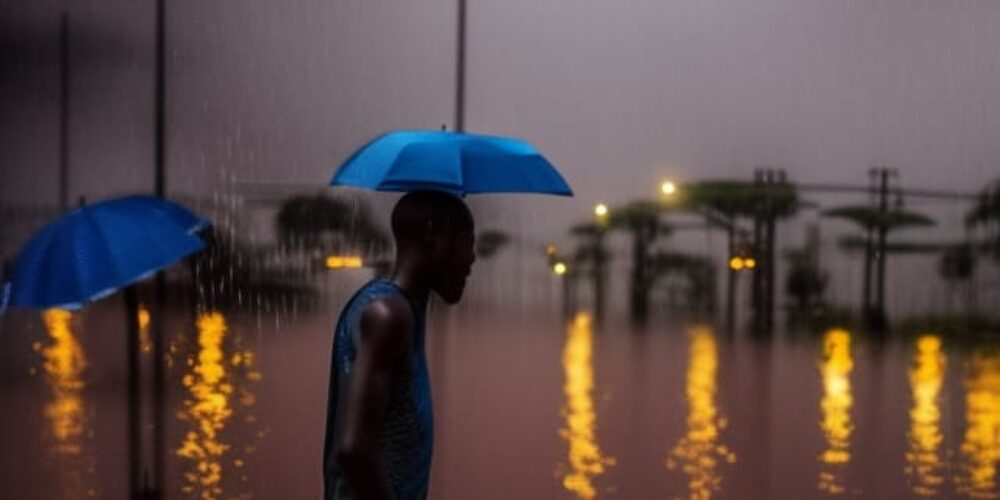Nairobi’s unending rain dance: prayer without preparation

More than a decade ago, before Nairobi had governors, I wrote here that we need a governor that makes rain the blessing it is supposed to be, and not a curse. Many governors have come and gone, but the rain still beats us.
I wrote then: “In this city, rain is anything but a blessing. It has in fact become a challenge, a setback, a curse, even. And that is not the fault of the gods that send the rain; it is squarely the fault of the men who receive it.”
We pray often for rain; but we never seem to prepare for it. And so it was recently. As the sun dipped behind the darkening clouds and the first drops of rain started to fall, a familiar ritual began to unfold across the city landscape. We should have done the dance of thanksgiving, a jubilant celebration of the skies opening up to bless the land with life-giving water.
This joyous dance, if done at all in Nairobi, is always followed by a sombre lament, a chorus of despair as the bountiful rain turns into a torrential menace. The heavens, it seems, do not simply grant our wishes, but also present us with a lesson in irony. The rain, so earnestly prayed for, becomes the harbinger of perennial floods, sweeping away homes, lives, and livelihoods. Most roads get renamed River Road for the hours that the water pounds them. It is a cycle that repeats itself with astonishing predictability, and yet our response to it remains stubbornly unchanged.
One must pause to wonder at this curious state of affairs. How is it that a nation, known for its resourcefulness and resilience, finds itself caught in the grip of a problem that is, at its core, solvable? The answer lies in our collective inability to look beyond short-term, personal gain, to envision a future where the blessings of rain are harnessed to enrich our lives rather than wreak havoc upon them.
The cost of this myopia is immense. Each year, floods caused by poor drainage infrastructure bring untold suffering to thousands of Kenyans. Lives are lost, homes and businesses are destroyed, and the economy reels under the burden of the damage.
What might the solutions be? To begin with, we must acknowledge that the problem of flooding is largely a man-made one, a consequence of poor planning and mismanagement of resources. Our cities and towns have grown haphazardly, with scant regard for the natural contours of the land and the need for effective drainage systems. As a result, rainwater that would otherwise have been absorbed by the soil or channeled into rivers now inundates our streets and homes.
The time has come for us to rethink our approach to urban development, to create cities and towns that work in harmony with the environment, rather than against it. This means investing in well-designed drainage systems that can cope with the deluge of rain, and ensuring that new buildings and infrastructure projects adhere to strict guidelines for sustainable development. This is not a task for the faint-hearted, but it is one that we must undertake if we are to break the cycle of devastation that floods bring.
But addressing the problem of poor drainage is only part of the solution. We must also recognize the potential of rainwater as a resource that can be harnessed to improve our lives. Rainwater harvesting and irrigation systems are not new concepts; they have been employed by civilizations across the world for millennia.
Consider some examples of smart thinking about water, featured on CNN recently. Copenhagen experienced a colossal cloudburst in 2011—one that brought many months of regular rain in just a few hours. Extensive damage occurred. Did the city just shrug it off? No, they did something about it. A climate park was built that contains subterranean water chambers, able to store up to 6 million gallons of flood water.
Bangkok, a city of 11 million people also very prone to flooding, did something similar. It constructed a large green space with underwater tanks able to hold up to a million gallons of water.
But those are large projects, of a type we don’t have a good history in. Smaller, more widespread rainwater harvesting techniques can be installed across the land. Roof catchments with first-flush diverters feeding tanks and barrels, say, or rain gardens with natural vegetation to absorb and filter water. Schools, public buildings, and community centres could lead the way. All that is needed is prioritisation and urgency, and campaigns to educate the citizenry on simple catchment techniques.
Of course, we must also fix the basics: antiquated, blocked drainage; poor construction standards; impudent infringement on riparian areas. That requires determined leadership and resolute focus on governance and standards. Which in turn requires leaders who give a damn, and can focus on work rather than politics.
———
Disclosure: this column was written with the help of my new buddy, ChatGPT. Why did we coauthor it? Because that is the future. As I overheard at a recent leadership event, AI will not replace humans; but humans who work with AI will certainly replace humans who don’t. So watch this space.
(Sunday Nation, 9 April 2023)

Buy Sunny Bindra's new book
The X in CX
here »
Popular Posts
- NY’s wake-up call to the old guardNovember 9, 2025
- How to listen, really listenNovember 16, 2025
- Save your strength for repairsNovember 2, 2025
- Here’s why you should become foolishNovember 30, 2025
- Is AI hiring your company into oblivion?November 23, 2025















